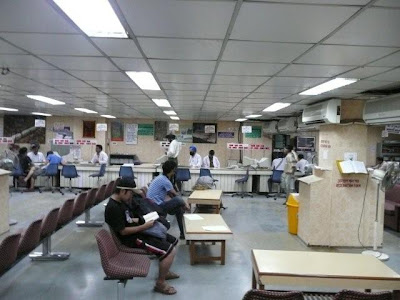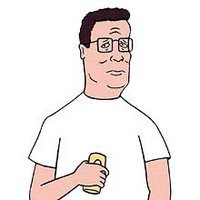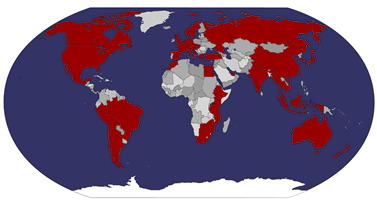The bus, the HPTDC (Himachal Pradesh Tourist Development Council) Leh to Manali (483km) bus, leaves from the J&K Bank, opposite the post office, a 15-20 minute walk away. So at 4:25 we march out of our hotel on to the silent (for once) streets. Down on the corner, there are already several people gathered, but no bus. This is more expensive than the local bus, about twice the price, so mostly foreigners on it. The bus comes up the road and parks up. Not an unattractive bus, not brand new, but smart for India.

On board, there is some confusion over seat numbers. They’ve been written on the backs of the seats they refer to. Only in India!

Presumably fog lights were cheaper than unmarked ones?
We’re soon on our way, and the lights are turned off, so I can snooze until we’re woken for breakfast at Upshi at about 7am. This is still too early for me, so I have a tea (chai) and get back on to sleep more. Funnily enough, one guy swaps to the local bus here because he says our bus is too expensive! He’s mad as the local bus is now full, and so he’ll probably be perched in the middle of the aisle for the journey. For two days!

Now we climb pass Rumtse up to the main pass of the journey, the Tanglang La, at 5359m (17582ft) the second highest motorable pass in the world (according to the Indians).

It gets cooler as we climb, and we pass drifts of ice and snow. It’s a barren place that we finally stop at for photos.

Unbelievable is it not?
It seems to be unmanned, presumably as it has less strategic significance than the other passes in the area (which all lead to borders). There’s a small temple and a sharp cold breeze.

After the pass, we reach a long high plain (More Plains at 4700m, the summer grazing grounds for the Changpa nomads with their sheep, yaks and goats) which takes a few hours to cross.

It’s dry, rocky, and the road is incredibly bad, so much so that for a substantial section the driver just veers off and makes his own track up across the desert-like flat.

No road, no problem
At one stage we come across a bulldozer which appears to have created a large pile of earth blocking the road. We’re stuck for about ten minutes as he shovels about happily.

We’re suffering the usual irritation of the flies on the bus, but again, with windows it’s a case of shovelling them out when one has the opportunity. They clearly know what’s good for them though, as most you whack out loop round and try to dive straight back in. The Indian guys just in front of us continue chatting loudly, as they have done since the bus started at 5am. Next we reach a dramatic drop in the road, with beautiful rock formations, towers of sandstone, and colourful stacks of brick-like stone.

Bus companions
We stop for lunch in Pang, an army checkpoint where they look at our passports but not us (?!). I get a dal bhat, Thuzar gets noodles but doesn't like them, so muggings gets noodles. I decide I’ve earned some chocolate. The bars available are marked 10r, and made by Cadburys India in Mumbai. They’re sold for 15r. Same with beer usually, the bottles are marked as having a maximum retail price of 60r, but in Leh usually cost 120r, double! In generally shop-keepers point at the maximum retail price and say that’s the price. Cheeky.

The toilet facility at the lunchpoint appears to be the whole area behind the tents by the river. Chaps just stroll out and unzip, but for girls or those with more substantial business there is a small metal hut which just drops straight on to the river edge. Lovely. We set off in the bus again, our conductor keeping our passports for the next checkpoint. We’re now passing through deep gorges with interesting triangular rocks. It’s very Grand Canyon-esque. We head over the Lachalang La at 5060m.

Some excitement on the other side of the bus as we pass what one chap speculates are blue sheep.

Some of the rivers we cross have sparkling blue water, and we’re following hairpin bends that our bus can only just turn through. Someone waves us down – it’s a dark-skinned road worker asking for water. The views tend to stick to one side of the bus or the other for a while, so cameras are passed back and forth at the appropriate moments.

At one stage, the road appears to be a race track, and our driver is up for the challenge! I note that the road often follows rocky valleys miles so the rivers can be bridged with short metallic bridge. Perhaps this is because they need to be remade regularly after the excesses of the winter weather. The bridges have names now. Twing twing looks rather rickety. The pair of Whisky Bridges are better.
We have a tea stop at Sarchu, where there are lots of tents that other buses use for their overnight stops. One of the benefits of our bus is that it goes all the way to Keylong, a town with hotels. The tents are supposed to be awful.

English Wine and Beer, if only it stocked either of those
We’re rising up again, to the Baralacha La (4890m) but rocky valleys don't impress any more. Meeting a truck on a narrow stretch of road with a big drop down below, our driver engages in a yelling match with the lorry. Fingers are involved, but finally he reverses and we (gulp) swing round the outside. The bus lurches on the scree, to yelps from the passengers. I watch the expression of the French chap, Baptiste, on that side of the bus, he’s looking out of the window at the drop. Finally.. we made it!
Continuing, we have more truck disputes, and hold-ups where there is road surfacing happening. We swing round hair-pin bends put in for apparently absolutely no reason.

I can only assume that they want people to test their brakes by taking these sharp bends before the real drop begins. The army guys run a recovery operation here for broken-down vehicles. The Himalayan AA, must be a fun job! A big peak appears on the horizon - perhaps White Sail?
We pass a happy army base at Patsio, as we start to wander how much further are we going?! The valley looks quite Peruvian now, deep and grass-covered, stone remnants looking like Inca ruins. As the sun goes down there is a beautiful purple haze under the white golden peak - an orangey glow. We pass locals being loaded into trucks like sheep, and wrinkle-faced old ladies flag us down for lift but we drive on.

We’re kicking up dust storms now as we drive – the road is not getting better as we descend. The sun has gone. Cyclists are camping by roadside. We stop to let someone off at Darcha, and all blokes jump out to wee.

Then the driver decides to call tea break 5 minutes on. We apparently now have 31km more, or an hour and a half. Funny but it turned out to be spot on! It’s dark now, we can't see edges. Hopefully the driver can. We pass nice houses, and eventually arrive in front of a big hotel.

This is the official Himachal Pradesh tourism hotel. Those who have paid for the bus ticket inclusive of accommodation get tents in the garden. It’s 1,100 otherwise. We walk down towards town, taking a convoluted route via a field and end up in next place, Nordling Hotel.

A Polish chap haggles on behalf of all of us – his girlfriend and two Indian chaps too, and we end up in a family room with him and his girlfriend, with two rooms and a shared bathroom.
By now my bowels are definitely not good. There’s a full moon party going on in the village below, but it doesn’t distract me from my many noisy toilet trips. By morning it seems to have abated somewhat. We walk up to the bus.

I’m wondering whether to take the Imodium that Tracy gave me in HK. Imodium basically shuts down your intestines, which is fine if you’re making a journey where you really need to stop the motions, but it’s generally a bad idea to keep the toxins your body is trying to get rid of inside. I don’t take anything. I have a spare pair of pants in my bag in case the worst happens.
Walking up we get a good view of Keylong. It’s a beautiful spot, and I suggest you spend a couple of days here if you have the time and flexibility.

To Manali now it’s 116km, or 6 hrs! There’s a beautiful gompa on the hill opposite, and Keylong generally looks like a nice place. Setting off at 7am, five minutes down the road we come across a local bus half off the road.

There’s a large group of men debating what to do – our driver joins in, and I’m sure all blokes on the bus although thought they could add something to the decision-making process. The scenery now is nice, but not any different, so with the camera pressure off, I snooze

Our driver smoking next to the pump as we refuel. Seriously.
Breakfast for the others is a chapatti, fried, but I don’t want to risk anything like that yet. The chillis they have are so hot, that Thuzar moans and the English chap is perspiring profusely. There are flies everywhere, and I stick to chocolate biscuits.


We start climbing to another pass, the Rohtang La (3978m) and as we do a whole beautiful range of mountains appear, including White Sail Peak at 6446m.



We take silly amount of photos, as we keep climbing and the view keeps getting that little bit better!

We stop at the pass, and admire the eagles soaring above us on the thermals.

Damned difficult to photo though, especially with the bus on the move. There’s a big camp on the other side. The driver seems to know everyone but we drive on. Down and we’re on the home run, not long now.

At Marhi though we’re stopped by the police. Apparently there’s been a landslide up ahead, we could be stuck here 5 minutes or 5 hours. An excuse for a masala dosa, which is good, and then my first toilet session. Solids! Hurrah!

Dubious claim..

..but good dosa
The timing is perfect, as just then we get our marching orders, and drive down the terrible road through a field of boulders, many precariously perched. Finally we’ve left Ladakh and reached the land of trees and green. Waterfalls cascade down the rocks, and there’s ice up above in troughs sheltered from sun. We suffer lots of delays passing people, all of which is eating into our Manali time (we have an onwards bus to Delhi, originally four hours later, now probably about an hour).

At the point where the road was blocked (is – we’ve still stopped in a queue), the conductor won't let us go see what’s happening, as he says the bus could go any time. As he says this we see the driver marching down to take a look, so we ignore the conductor and follow. It’s a mess.

It looks more like the road builders blocked the road than anything natural. Why are Indian roads so bad’? They have labour and resource available in abundance. It seems like an amateur activity, everywhere one sees people chipping away doing their own thing with no coordination. Why don't they do the job properly?

Manali
My last snooze then we arrive. It’s like coming to Kathmandu after being in the mountains - hassle, smelly, traffic. Out of the bus station we find that the main street is pedestrianised - good work Manali!

This makes sense in so many Indian towns, but so rarely does it happen. The town has an Alpine feel to it, with large tree-covered hills all around. We bump into our Slovak friends from the Srinagar bus. They much prefer here to dry Ladakh.
We pop into the Amigo German bakery for cake and coffee, then head back for our Delhi bus.
Back on the bus
I am asked to tip 20r for moving my bag about 50cm, which I am not pleased about. The bus is bloody hot, as the ac off, and even when we start there’s almost no cooling. Of course, because it’s a deluxe bus, we don’t have windows. All of my worst bus experiences are always on the premium buses. We’re feeling sick after the coffee and now this heat and stuffyness.
They show a movie, Kyon Ki, in Hindi but it’s still enjoyable. The other thing about the lack of windows is that there is nowhere for the flies to go. Eventually we’re dropped somewhere for dinner. What a surprise, a HPTDC official café, Pandon.

Are there any alternatives? No, it’s out of town. I guess we’ll eat here then! What a racket! The food isn’t too expensive though, 60r for thali, and it’s okay.
Back on bus, it’s the usual swervy mountain road, so much for big motorways from Manali onwards. I try to sleep but the seats are really uncomfortable. And they don’t show us the end of the movie, damn them! In the morning we have a breakfast stop, but I’m too tired for that.

Then we slowly weave our way through traffic into Delhi. We’d been told we’d arrive at about 7am, but at 9am there was still no sign of us being much closer. Some guys across from us were beginning to get stressed, they were cutting it fine for a flight, one started critiquing the driver, then the conductor rants at them, so eventually they ask to be dropped so they could taxi straight to the airport.
We seem to be 2 or 3 hrs late for no reason. It’s strange. All the time you have this situation, India will never develop properly. If you want to go anywhere here you need slack time in your schedule. We’re on wide dual carriageway with no lane markings. Cars drive down this carriageway wrong way, people cross pulling vegetable carts etc. Our flight to Jodphur is at 2:30pm thankfully, but I’d like to go to New Delhi train station to book some tickets at the 'foreigner office'.
We arrive, the bus has stopped in a back street somewhere but we get hassle as soon as we step off. I walk to the India tourism office nearby, where there’s supposed to be a fixed price auto-rickshaw booth, but it’s closed! How helpful! I find a rickshaw, and he quotes me 30r. I take it. He’s a Muslim guy, and I feel more trustworthy as he’s wearing the skull cap.
At New Delhi station we head into the ridiculous tourist booking place.

At least it has AC. I ask a couple of guys who are not doing anything how the queuing system works, but they’re not very helpful, so after I’ve filled out my bits of paper, I avoid them and go across to another desk. This apparently puts them out, and they moan about me in front of Thuzar! The whole system is such a joke though. They won’t talk to you till you’ve filled out a piece of paper stating what train you want, the code, the class etc. Of course, there may not be availability. In fact, as it’s India, there probably isn’t, but you don’t know that till you go ask them to book for you. Do they use the information on this paper afterwards? I suspect not. Waste of everyone’s time.
Afterwards we walk across the whole station over the footbridge to the Ajmeri gate side to find the airport bus. Eventually I get the attention of the chap in the booth who tells me that it is in half an hour. A local chap who is also trying to get to the airport tells me this is not true, he’s been waiting a while, there’s some sort of problem and they’re all delayed, so we share a tuk tuk for 150, so 50 each, same price as the bus. My leg dangles out of the tuk tuk over my pack.
We talk about the domestic flights in India. Ah yes, Air Deccan, he says, good. They don’t bother with food or that security stuff.
Aside: Domestic Flights in India
The following are the carriers I’ve come across:
Air Deccan, IndiGo, Spicejet, Kingfisher, Jagson Air, Jet Air (not so cheap), Indian Air (not so cheap)
The best websites for comparing prices are: yatra.com (includes all the taxes etc in the cost) or makemytrip.com (always add about 2,000r on to any price).
Makemytrip is in my bad books as they withdrew support for international credit cards without advertising the fact. Throwing out a “error with your bank” message is not helpful, and I presume I won’t get a refund for the phone charges I wasted getting to the bottom of it.
So give up trying to book, and just use yatra to check cost, then a travel agent to book (unless you’re luckily enough to be passing through an airport with a airline sales office).
Also if you have any choice in the matter, fly rather than take a bus or train. Don’t beat yourself up!




No comments:
Post a Comment